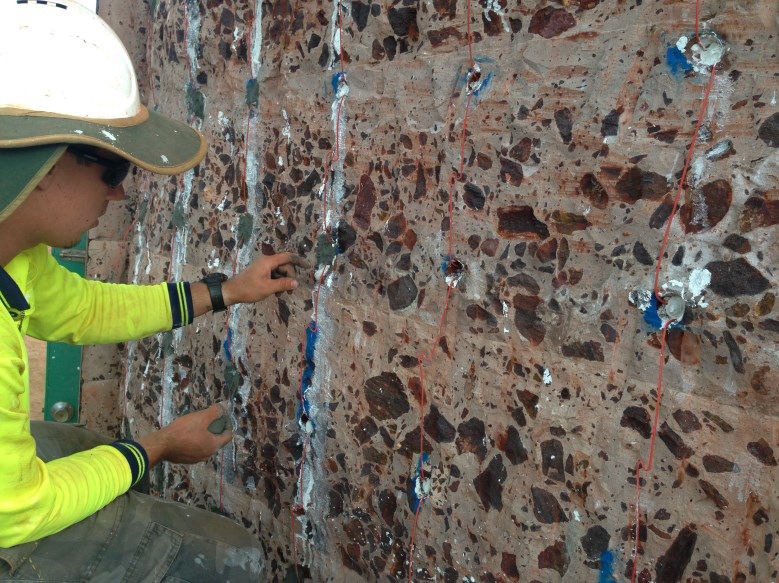HYBRID CP BASED CONCRETE REPAIRS TO CAPE DON LIGHTHOUSE
PROJECT HIGHLIGHTS
• Isolated site locality (minimisation of onsite monitoring and maintenance a critical requirement)• Over 3,500 Hybrid anodes installed
• Achieved 100% corrosion protection of reinforced concrete elements
• Expected anode design life in excess of 50 years
Infracorr has designed and supervised the Hybrid based corrosion protection (CP) based concrete repairs to AMSA’s historic Cape Don lighthouse in the Northern Territory. Working closely with specialist contractor Marine and Civil Maintenance PL, the repair works are designed to provide an additional 50 years of life to the structure.
The approximately 30m tall Cape Don Lighthouse located on the Cobourg Peninsula, Northern Territory, was constructed in 1917
to service the passage between the
Cobourg Peninsula and Melville Island
en route to Darwin.
The concrete was suffering from significant chloride induced spalling due to the original construction with beach sand.
As one of Australia’s leading designers of electrochemical and other rehabilitation systems, Infracorr Consulting considered several options for repair. A cost effective and appropriate design was prepared, which took into account the isolated site, a requirement for a long system service life, and the need for low monitoring and maintenance.
In conjunction with concrete patch repairs and protective coatings, the Hybrid CP system was chosen to provide the long
term protection to the lighthouse.
The Hybrid CP system utilizes zinc alloy anodes installed into drilled holes, with the anodes initially powered using a small power supply. The high initial current passivates the reinforcement, restoring the alkaline (high pH) environment to the concrete.
Following this initial phase, the power supply and temporary cables are removed, and the anodes are then connected to the reinforcement to provide ongoing galvanic protection.
Hybrid CP was adopted over traditional ICCP primarily as it is very suited to such an isolated site location and its inherent benefits of significantly reduced requirements for monitoring and maintenance and hence major savings in the associated costs.
Also, due to the remote nature of the site, it was extremely important to ensure that the repair works to the lighthouse were adequately supervised and monitored.
Periodic supervision visits by Infracorr throughout the duration of the project allowed thorough inspection and testing of the Hybrid system. This, together with stringent quality assurance and project communication, will ensure the long term integrity of the system and the lighthouse.




